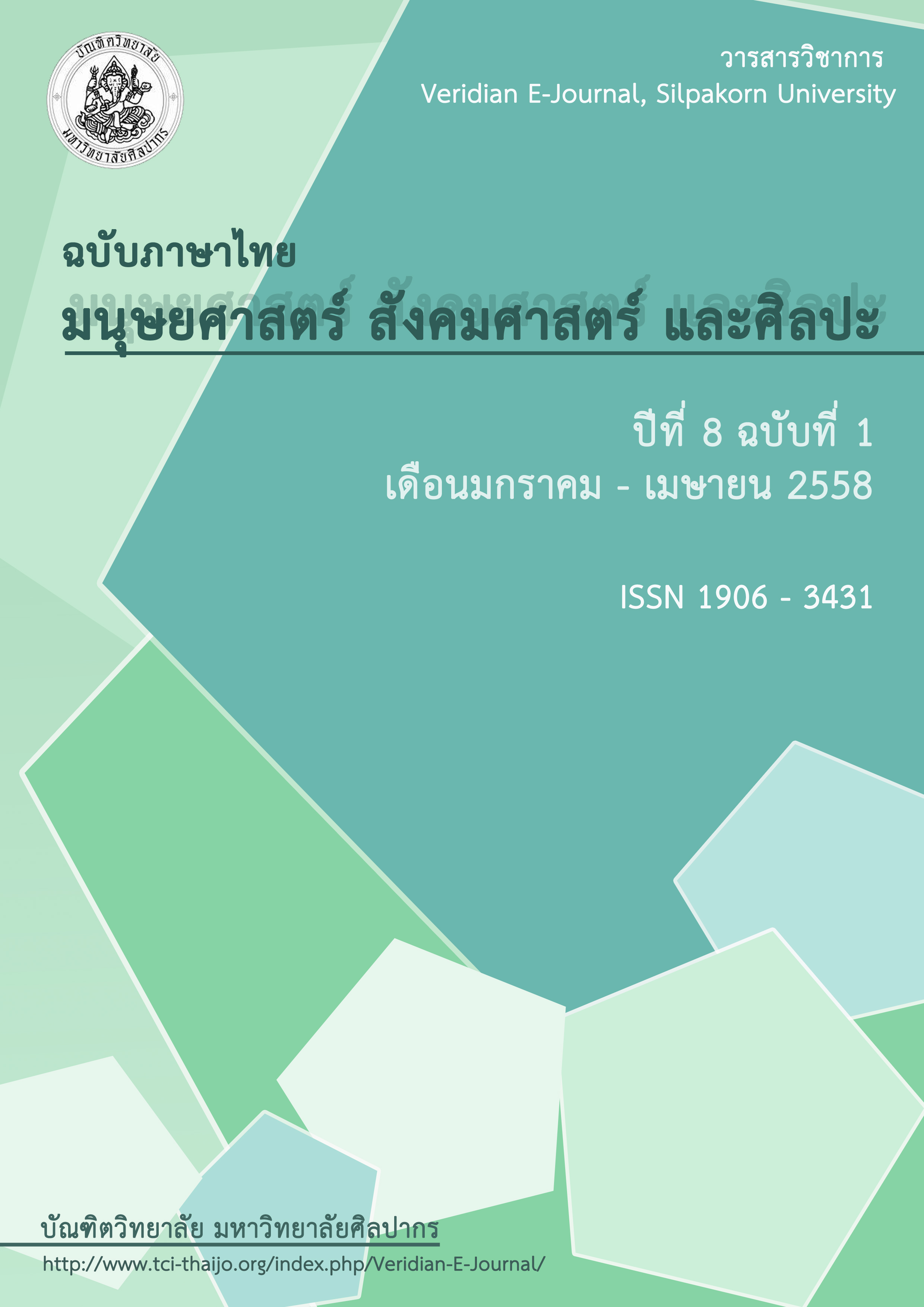รูปแบบการส่งเสริมกระบวนการคิดสร้างสรรค์ของผู้บริหารในวิทยาลัยพยาบาลสังกัดสถาบันพระบรมราชชนก
Main Article Content
Abstract
บทคัดย่อ
การวิจัยครั้งนี้มีวัตถุประสงค์เพื่อทราบรูปแบบการส่งเสริมกระบวนการคิดสร้างสรรค์ของผู้บริหารในวิทยาลัยพยาบาลสังกัดสถาบันพระบรมราชชนกตามความเห็นร่วมของผู้เชี่ยวชาญ เป็นการวิจัยเชิงพรรณนา (descriptive research) และการวิจัยด้วยเทคนิคเดลฟาย (Delphi technique) เครื่องมือที่ใช้ในการเก็บข้อมูลได้แก่ แบบสอบถามปลายเปิดและแบบสอบถาม ผู้ให้ข้อมูลได้แก่ ผู้เชี่ยวชาญจำนวน 17 คน สถิติที่ใช้ในการวิเคราะห์ข้อมูล ได้แก่ ค่าความถี่ ร้อยละ ค่ามัธยฐาน ค่าฐานนิยม ค่าพิสัยระหว่างควอไทล์ และการทดสอบไค–สแควร์
ผลการวิจัยพบว่า
รูปแบบการส่งเสริมกระบวนการคิดสร้างสรรค์ของผู้บริหารในวิทยาลัยพยาบาลสังกัดสถาบันพระบรมราชชนก ตามความเห็นร่วมของผู้เชี่ยวชาญ พบว่า ผู้เชี่ยวชาญจำนวน 17 คน เลือกใช้รูปแบบการส่งเสริมกระบวนการคิดสร้างสรรค์ของผู้บริหารฯทั้งหมด 4 รูปแบบ โดยผู้เชี่ยวชาญมีความคิดเห็นในระดับมากที่สุดและสอดคล้องกัน ทั้งหมด 4 รูปแบบ และการตรวจสอบความแตกต่างของการเลือกรูปแบบการส่งเสริมกระบวนการคิดสร้างสรรค์ของผู้บริหารฯ ทั้ง 4 รูปแบบ พบว่าไม่แตกต่างกันอย่างมีนัยสำคัญทางสถิติที่ระดับ .05 นอกจากนี้ผู้เชี่ยวชาญจำนวน 9 คน เลือกใช้รูปแบบการส่งเสริมกระบวนการคิดสร้างสรรค์ของผู้บริหารฯทั้งหมด 4 รูปแบบ เช่นเดียวกันกับผู้เชี่ยวชาญจำนวน 17 คน
รูปแบบการส่งเสริมกระบวนการคิดสร้างสรรค์ของผู้บริหารในวิทยาลัยพยาบาลสังกัดสถาบันพระบรมราชชนก มีทั้งหมด 4 รูปแบบ คือ 1)รูปแบบ A ประกอบด้วย การให้โอกาส การให้เกียรติ การให้อิสระ การเป็นพี่เลี้ยงสอน การจัดบรรยากาศและสิ่งแวดล้อมให้เอื้อต่อการคิดสร้างสรรค์ การสร้างแรงจูงใจ 2)รูปแบบ B ประกอบด้วย ผู้บริหารต้องเรียนรู้จิตมีศรัทธา วิริยะ สติ สมาธิ ปัญญา ผู้บริหารมีการมองเชิงบวก ผู้บริหารต้องคิดดีกระทำดีทั้งวจีกรรมและกายกรรมให้เหมาะสมกับเวลาและบุคคล ผู้บริหารต้องมีพุทธะ ผู้บริหารลงมือปฏิบัติธรรมให้สอดคล้องกับการดำเนินชีวิต 3)รูปแบบ C ประกอบด้วย ผู้บริหารฝึกหาแนวคิดสร้างสรรค์ด้วยตนเอง ผู้บริหารต้องเข้าอบรมพัฒนาผู้บริหารให้เป็นระยะๆผู้บริหารต้องมีการสั่งสมประสบการณ์ที่ดีและใช้ประสบ การณ์ที่ดีต่อยอดการพัฒนาองค์กร ผู้บริหารต้องใฝ่รู้ด้วยตนเอง ผู้บริหารต้องมีการคิดเชิงบวก 4)รูปแบบ D ประกอบด้วย สถาบันควรลดการทำงานแบบพิธีการ ผู้บริหารมีเวทีในการแสดงผลงานทางวิชาการ ผู้บริหารสร้างความคิดสร้างสรรค์ภายใต้หลักคิดเชิงวิชาการ สถาบันต้องคัดสรร
และประเมินความคิดสร้างสรรค์ของผู้บริหารใหม่ ผู้บริหารที่มีความคิดสร้างสรรค์ควรได้รับการชื่นชม ผู้บริหารต้องมีความอดทนต่อปัญหาและความล้มเหลว ผู้บริหารสามารถคิดสร้างสรรค์เต็มที่ตามพันธกิจของวิทยาลัย ผู้บริหารมีความคิดเชิงบูรณาการกับนานาชาติและสิ่งแวดล้อม ผู้บริหารต้องใช้เทคโนโลยีในการทำงานได้ ผู้บริหารต้องใช้เกณฑ์ตัวบ่งชี้การศึกษาเข้ามาบริหารงาน ผู้บริหารมีสมรรถนะเป็นผู้นำทางวิชาการ ผู้บริหารต้องสุขภาพดีแข็งแรง
Abstract
The purpose of this research was to determine models of promoting administrators creative thinking process in nursing colleges under Praboromarajchanok institute for health workforce development based on expert’s consensus. The descriptive research and delphi technique were used in this study. The instruments for collecting the data were interview form and questionnaires. The sample of this study were 17 experts.
Data were analyzed using frequencies, percentages, medians, modes, interquartile ranges and Chi-squares test.
The research findings revealed that :
Findings revealed that there were four models of promoting administrators creative thinking process in nursing colleges under Praboromarajchanok Institute for Health Workforce Development based on expert’s consensus. All experts agreed at the highest level on four models without any significantly statistical differences at 0.05. Furthermore, all nine experts also selected the four models similarly to the 17 expert’s as described above.
All four models of promoting administrators creative thinking process in
nursing colleges under Praboromarajchanok Institute for Health Workforce Development (PBRI) were illustrated. Firstly, Model A included giving opportunities, respecting others, keeping independence, mentoring and setting up creative environment and motivating. Secondly, Model B included leaders should use the religious characteristics such as faith, attempt, attention and wisdom as well as positive thought, being good person both verbal and action in the right time and right person, having Buddha condition and practicing dharma in daily life of the leaders. Thirdly, Model C projected that the administrators should have self directed learning to look for creative concept by themselves or attend the administrative developmental course continuously, accumulate good experience and apply it in organization development plus positive thinking. Fourthly, Model D included reducing formal environment in the colleges, increasing opportunities to show creative works, the administrators should develop creative ideas based on the academic principle, therefore, assessing creative minds of the new administrators and admiring creative administrators should be performed by PBRI. Furthermore, administrators were expected that being patient for problem and failure, being able to demonstrate their creative minds freely based on missions of institutes, having the integration between international and environmental concepts, applying technology, educational indicators of quality assurance to govern colleges. Moreover, the administrator should have an academic leadership and a good health also.
